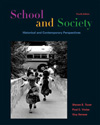Chapter 13 extends the discussion of social and educational inequality from Chapter 12 to examine some of what we know about meeting the challenges of diversity and equity in today’s schools. Whereas Chapter 12 might be described as a "language of critique" in its description of social and educational inequality, Chapter 13 presents a "language of possibility." It is possible to understand teaching and learning differently, and it is possible to teach in ways that include more and more children in successful learning experiences. How teachers understand the complex relationships between the school and the child plays a major role in how teachers respond to the learning needs of their students. This chapter explores several differently theoretical approaches to understanding why different social groups perform different in today’s schools. These approaches include genetic deficit theory, cultural deficit theory, and critical theory. The last of these incorporates cultural difference theory, cultural subordination theory, and resistance theory in trying to explain educational inequality in the United States. Finally, the chapter turns to a variety of pedagogical (teaching) approaches to supporting success for all students in the classroom. These include multiculturalism, culturally responsive pedagogy, bilingual and ESL instruction, gender sensitive teaching, and others. The first Primary Source Reading criticizes multicultural education in favor of anti-racist education, while the second reading examines bilingual education. |



 2002 McGraw-Hill Higher Education
2002 McGraw-Hill Higher Education